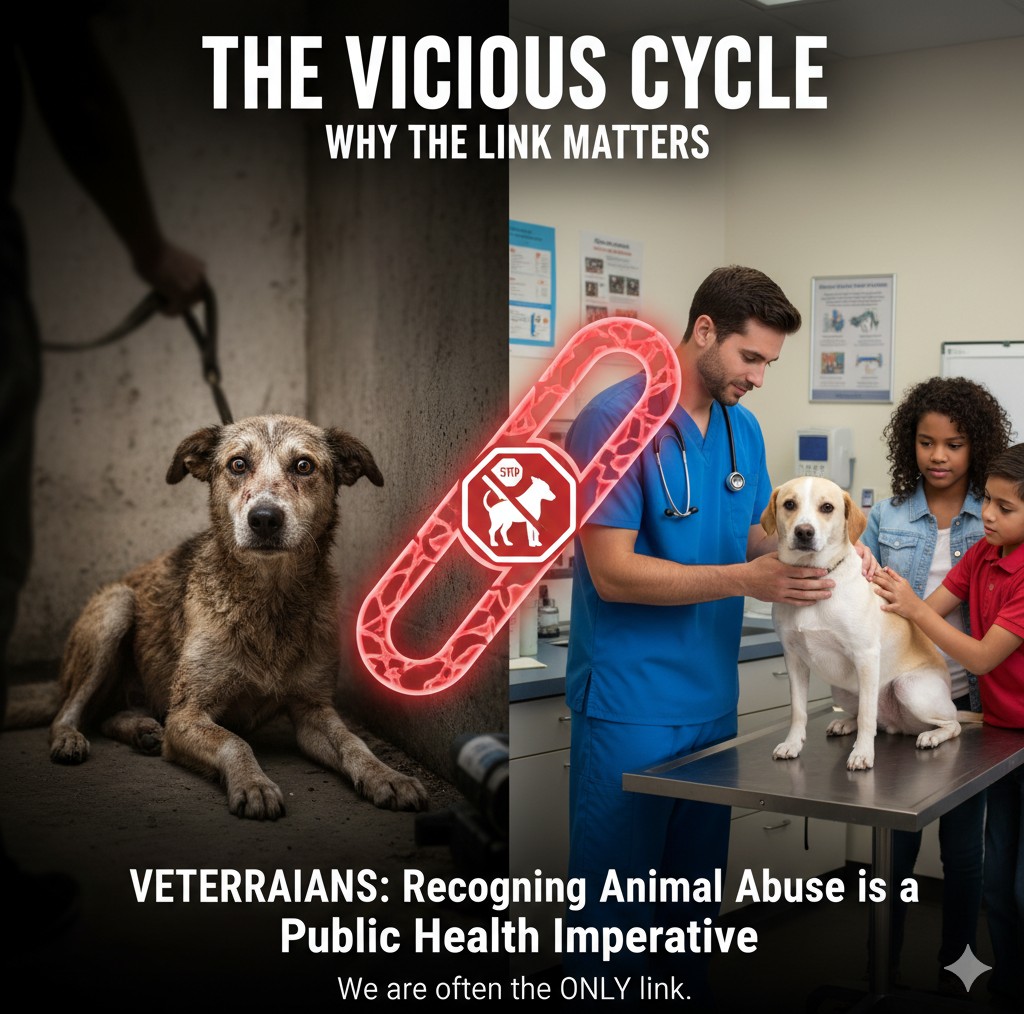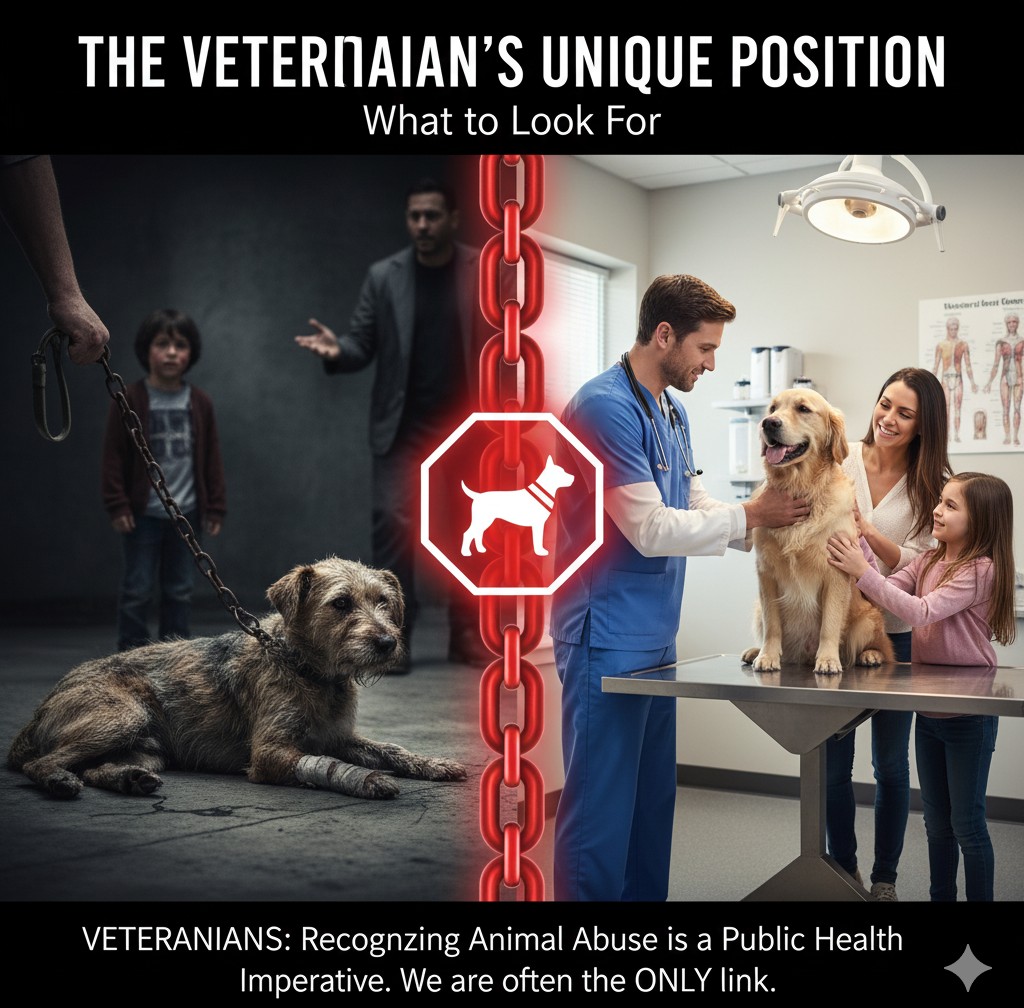The Vicious Cycle: Why the Link Matters
The bond between humans and animals is profound, often built on trust, love, and dependency. However, for some individuals, this relationship is tragically twisted into a cycle of abuse. The veterinary profession sits at a unique intersection where this abuse often becomes visible. It is now widely recognized that animal cruelty is a significant indicator—often called the "Link"—for concurrent or future human interpersonal violence, including domestic abuse, child abuse, and elder abuse.

Research across psychology, sociology, and criminal justice consistently demonstrates that violence is rarely contained to a single victim. Individuals who abuse animals may be escalating their aggressive behavior, practicing violence, or exerting control over family members by threatening or harming pets.
For veterinarians, recognizing signs of animal abuse is not merely a matter of animal welfare; it becomes a public health imperative. We are often the only professionals who interact with both the victimized animal and the abuser/family unit in a non-confrontational, trusting environment.
The Veterinarian’s Unique Position

A veterinary clinic is a place of healing and trust. Unlike emergency rooms or social service agencies, pet owners generally do not fear immediate scrutiny when they bring an injured animal in. This provides veterinarians with a critical, often singular, opportunity to observe subtle and overt signs of abuse.
What to Look For
- Inconsistent Injuries: The caregiver’s explanation for the animal's injuries (e.g., fractures, burns, contusions) does not match the clinical evidence or the severity of the trauma.
- Repetitive Injuries: The animal repeatedly sustains unexplained injuries, often presenting with wounds in different stages of healing. Delayed Treatment: The owner is reluctant to seek treatment or delays it significantly, worsening the animal's condition.
- Caregiver Demeanor: The owner is overly detached, aggressive, or blames the injury entirely on a young child or inanimate object. Conversely, they may be overly dramatic or focused on minor issues while ignoring major trauma.
- Concurrent Human Injuries: Observation of unexplained injuries or fear/distress in the human companions (especially children or elderly individuals) accompanying the animal.
Moving from Recognition to Responsibility

A veterinarian’s responsibility extends beyond treating a broken bone or skin wound. It includes the moral and, in many regions, legal obligation to report suspected abuse.
The necessary steps include:
- Documentation: Meticulous medical record-keeping is paramount. Document all physical findings, take clinical photographs, and record the owner's exact statements regarding the cause of the injury (using quotation marks).
- Safety First: If a veterinary professional suspects a person is in immediate danger, their first priority must be to contact local law enforcement or protective services.
- Understanding Reporting Laws: Veterinary professionals must be educated on their state or region’s mandatory reporting laws regarding both animal cruelty and the suspected abuse of vulnerable human populations (like children and the elderly).
- Collaborative Intervention: Vets should establish protocols to work with local animal control, humane societies, and social service agencies. Intervention works best when it is multidisciplinary.
A Call to Action for the Veterinary Community
The veterinary community has a powerful role as silent witnesses and potential first responders in the fight against all forms of violence.
By recognizing the 'Link,' we transform from caregivers of individual animals into crucial protectors of both pets and people.We must advocate for more comprehensive training in veterinary forensics and mandatory reporting procedures in every veterinary curriculum and professional development program.
It is our duty—a duty to the animals we heal and the community we serve—to speak up when we see the signs of violence.
The health of our patients and the safety of our communities depend on us breaking the silence.







